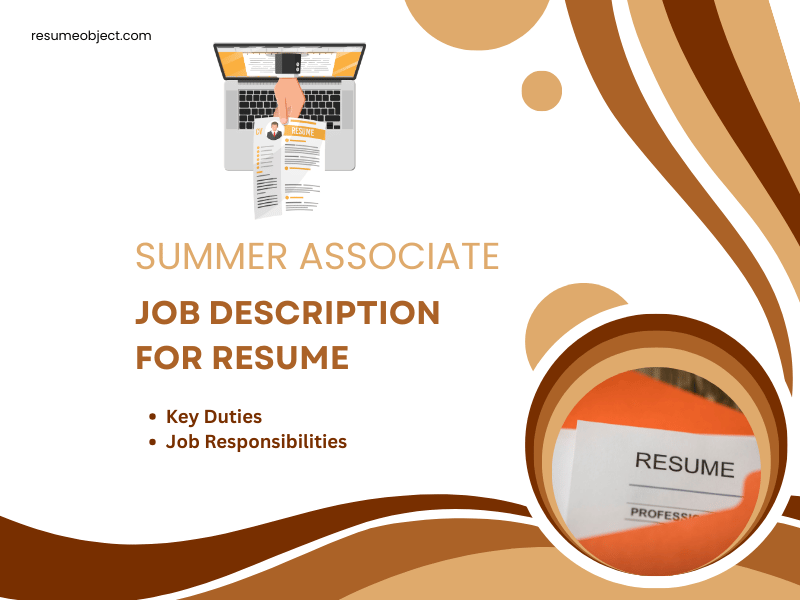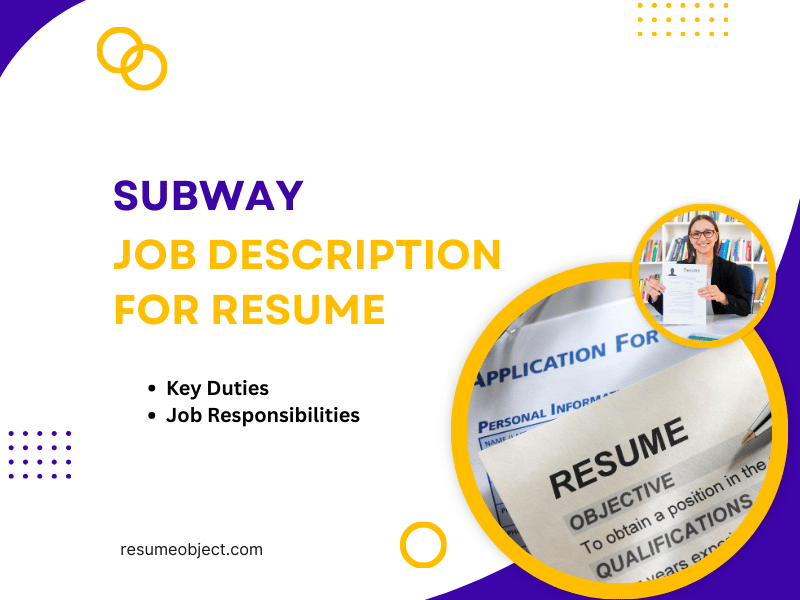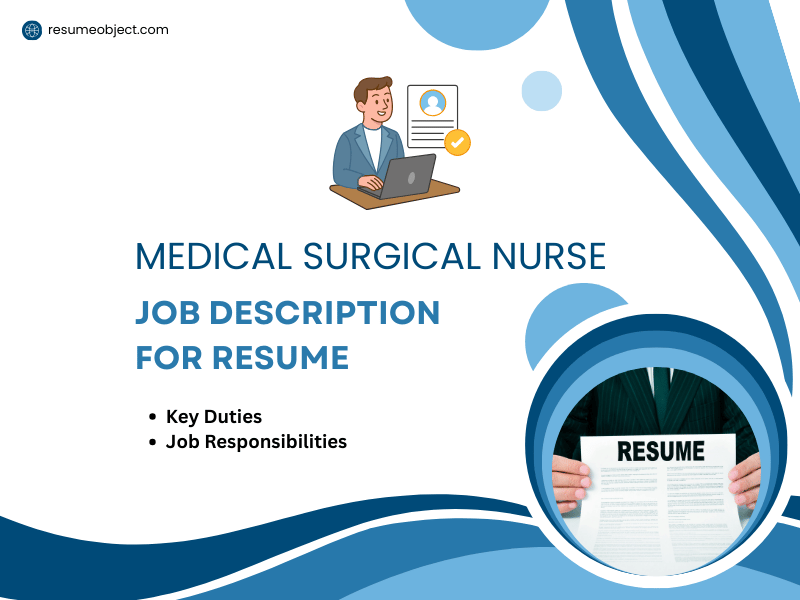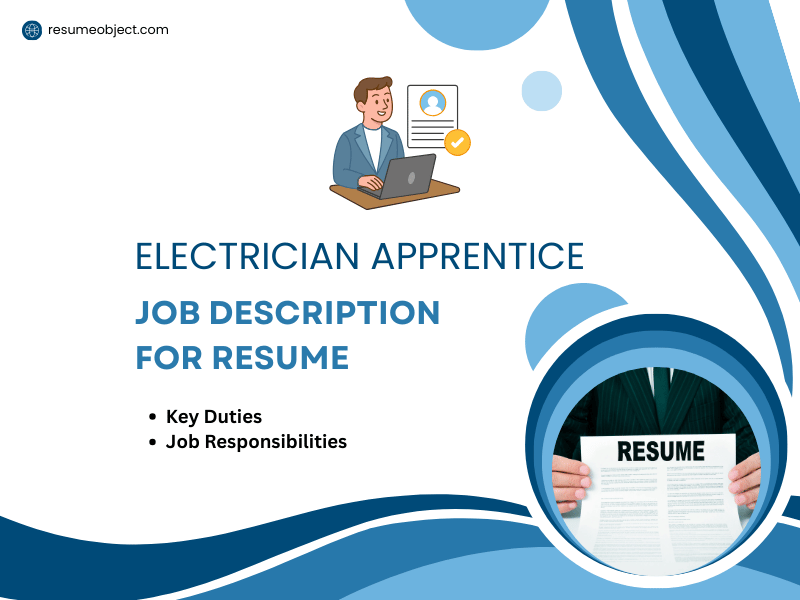Entering the job market without professional experience can feel overwhelming, but a well-crafted resume can open doors to your first job. For recent graduates, students, or career changers, showcasing potential through education, skills, and non-traditional experiences is key to standing out. At ResumeObject, we’re dedicated to empowering job seekers with free resume templates, samples, and guides.
This in-depth article offers 15 practical tips to help you write an entry-level resume that highlights your strengths, aligns with employer needs, and passes applicant tracking systems (ATS), even if you lack formal work experience.
Why an Entry-Level Resume Matters
A resume is your first impression, showcasing your qualifications and enthusiasm to hiring managers. For entry-level candidates, the challenge is demonstrating value without a robust work history. A 2024 survey by JobSeeker Insights revealed that 65% of employers are open to hiring candidates with no experience if their resumes highlight transferable skills and motivation.
Also Read: How to Include Soft Skills in Resume Without Sounding Generic
A strong resume is crucial for entry-level job seekers because it’s often the first and only chance to make a positive impression on potential employers. With no formal work experience to lean on, your resume must work harder to showcase your skills, personality, potential, and passion.
Here are key reasons why a well-crafted resume matters at the entry level:
Creates a Professional First Impression
Hiring managers may spend only a few seconds scanning a resume. A clean, organized, and thoughtful layout signals professionalism and attention to detail—even before they read the content.
Compensates for Lack of Experience
Without job history, employers look for indirect indicators of suitability, such as academic achievements, projects, volunteering, and personal skills. A good resume presents these elements confidently and cohesively.
Highlights Transferable and Soft Skills
Entry-level resumes should focus on transferable skills like teamwork, communication, adaptability, and problem-solving. Demonstrating these skills can make up for not having prior job-specific experience.
Sets You Apart from Other Fresh Candidates
Most entry-level applicants are in a similar situation. A well-structured resume helps you stand out by communicating your goals clearly, reflecting enthusiasm, and showing how you align with the company’s needs.
Opens the Door to Interviews
Ultimately, your resume is a ticket to the interview stage. It convinces employers you’re worth meeting, and once you’re in the door, you can sell yourself further in person.
An effective entry-level resume:
- Proves Potential: Emphasizes skills and education to show readiness for the role.
- Aligns with the Job: Tailors content to match employer expectations.
- Passes ATS: Uses keywords to ensure visibility to recruiters.
- Builds Confidence: Presents a professional narrative, even with limited experience.
By focusing on your strengths and following these tips, you can create a resume that competes with more experienced candidates.
15 Practical Tips for Writing an Entry-Level Resume
These 15 tips provide a step-by-step guide to crafting a resume that showcases your potential without professional experience. Each tip includes actionable advice and examples to help you succeed.
1. Choose a Functional or Combination Format
Without extensive work experience, a functional resume (emphasizing skills) or combination resume (blending skills and limited experience) is ideal. These formats highlight your abilities over a sparse work history, unlike the reverse-chronological format suited for experienced professionals.
Example: A functional resume might lead with a “Skills” section, listing “Communication: Delivered 10+ presentations in university projects.”
Action: Create a resume with sections for Skills, Education, and Experience (including non-traditional roles), prioritizing skills relevant to the job.
2. Analyze the Job Description
Carefully review the job posting to identify key skills, qualifications, and keywords, such as “customer service” or “data entry.” Incorporate these into your resume to align with employer needs and pass ATS filters.
Example: For a marketing assistant role requiring “social media skills,” include “Managed university club’s Instagram, growing followers by 20%.”
Action: Highlight 3-5 keywords from the job description and weave them into your resume sections.
3. Lead with a Strong Objective Statement
An objective statement introduces your career goals and enthusiasm, ideal for entry-level candidates. Keep it concise (2-3 sentences), tailored to the job, and focused on how you’ll contribute.
Example: “Recent B.S. in Computer Science graduate seeking a Junior Developer role to apply Python skills from coursework and contribute to innovative tech solutions at [Company Name].”
Action: Write an objective that names the role, highlights a key skill, and expresses eagerness to contribute.
4. Highlight Your Education
Place your education section near the top, as it’s a primary asset. Include your degree, major, institution, graduation date, and relevant coursework, projects, or academic achievements.
Example:
Education
B.A. in Marketing, University of Texas, Austin, TX, May 2024
- Relevant Coursework: Digital Marketing, Consumer Behavior
- Capstone Project: Developed a social media campaign, increasing engagement by 15%.
Action: List your degree and 2-3 academic highlights that align with the job.
5. Showcase Transferable Skills
Emphasize transferable skills gained from non-work experiences, such as communication, teamwork, or problem-solving. Draw from coursework, internships, or volunteer work to demonstrate relevance.
Example: “Collaborated on a team of 4 to complete a biology research project, presenting findings to 50+ peers.”
Action: Identify 3-5 transferable skills from your background and provide specific examples for each.
6. Include Non-Traditional Experience
Internships, volunteer work, freelance projects, or extracurricular activities can fill the experience section. Format these like professional roles, focusing on achievements.
Example:
Volunteer Coordinator, Local Food Bank, Chicago, IL, Jun 2023–Aug 2023
- Organized 5 community events, raising $3K for hunger relief.
- Trained 10 volunteers, improving efficiency by 20%.
Action: Add 1-2 non-traditional roles, detailing responsibilities and results.
7. Use Action Verbs
Start bullet points with action verbs like “developed,” “organized,” or “presented” to convey proactivity. Avoid weak verbs like “helped” or “assisted.”
Example: “Designed 3 marketing flyers for a student organization, increasing event attendance by 25%.”
Action: Compile a list of action verbs and use them to frame your achievements.
8. Quantify Achievements
Quantify results to add credibility, even for non-work experiences. Use numbers like percentages, time saved, or people impacted to show tangible contributions.
Example: “Managed social media for a campus club, growing followers by 20% in 3 months.”
Action: Add metrics to at least one bullet point per experience entry.
9. Create a Dedicated Skills Section
List both hard and soft skills relevant to the job in a separate section. Include technical skills (e.g., Excel, HTML) and soft skills (e.g., communication, adaptability) backed by examples elsewhere in the resume.
Example:
Skills
- Technical: Python, Microsoft Office, Adobe Photoshop
- Soft: Team Collaboration (led 5 group projects), Time Management (balanced 15+ hours of volunteering weekly)
Action: List 5-8 skills, ensuring they match the job description.
10. Highlight Projects and Coursework
Academic projects or coursework can demonstrate relevant skills. Describe projects like professional achievements, focusing on outcomes and tools used.
Example:
Capstone Project, B.S. in Computer Science, May 2024
- Developed a mobile app prototype using Java, improving user navigation by 30%.
- Presented findings to 40+ stakeholders, earning top marks.
Action: Include 1-2 projects with detailed descriptions and results.
11. Incorporate Extracurricular Activities
Clubs, sports, or student organizations can showcase leadership and teamwork. Highlight roles and achievements that align with job requirements.
Example:
President, Marketing Club, University of Florida, Sep 2022–May 2023
- Led 20 members in organizing 3 workshops, increasing membership by 15%.
- Coordinated with faculty to secure $2K in funding.
Action: Add 1-2 extracurricular roles with quantifiable achievements.
12. Optimize for ATS
Use job-specific keywords and a simple, text-based format to ensure ATS compatibility. Avoid graphics, tables, or non-standard headings that may confuse software.
Example: Use “Customer Service” instead of “People Skills” if the job description specifies it.
Action: Paste your resume into a plain text editor to check ATS readability.
13. Keep It Concise
Aim for a one-page resume, focusing on the most relevant details. Use concise language and limit bullet points to 3-5 per section to maintain clarity.
Example: Instead of “was responsible for organizing events,” write “organized 5 events, boosting attendance by 20%.”
Action: Edit your resume to fit one page, removing redundant or less relevant entries.
14. Proofread Thoroughly
Errors in grammar, spelling, or formatting can undermine professionalism. Double-check names, dates, and details, and use tools like Grammarly for accuracy.
Action: Review your resume twice and ask a peer to proofread for errors.
15. Customize for Each Job
Tailor your resume for every application, adjusting keywords, skills, and examples to match the job description. A generic resume is less likely to impress.
Example: For a data analyst role, emphasize “data visualization skills from coursework”; for a sales role, highlight “customer engagement from volunteer work.”
Action: Create a master resume and modify it for each job, saving versions for tracking.
Must Read: How to List Work Experience to Showcase Career Achievements in Resume
Examples of Entry-Level Resume Sections
Below are examples of resume sections for different job categories, showing how to apply these tips without professional experience.
Objective Statement
- Marketing Assistant (Marketing & Advertising)
Motivated B.A. in Marketing graduate seeking a Marketing Assistant role to apply social media and content creation skills from university projects. Eager to contribute innovative campaigns and enhance brand engagement at [Company Name]. - Junior Software Developer (Information Technology)
Recent B.S. in Computer Science graduate seeking a Junior Developer role to leverage Python and Java skills from coursework and hackathons. Committed to delivering efficient code and collaborative solutions.
Education
- B.S. in Biology, University of California, Davis, CA, May 2024
- Relevant Coursework: Molecular Biology, Genetics
- Research Project: Analyzed DNA sequences, presenting findings to 30+ peers.
- GPA: 3.8/4.0
- B.A. in Communications, Ohio State University, Columbus, OH, Jun 2024
- Relevant Coursework: Public Relations, Media Writing
- Group Project: Developed a PR campaign, increasing mock client engagement by 20%.
Experience (Non-Traditional)
- Social Media Intern, Local Startup, Austin, TX, Jan 2023–May 2023
- Created 10+ weekly posts, growing Instagram followers by 15%.
- Analyzed engagement metrics, improving content reach by 10%.
- Collaborated with a team of 3 to plan campaigns.
- Volunteer Tutor, Community Center, Boston, MA, Sep 2022–Dec 2023
- Tutored 15 students in math, improving grades by 25%.
- Developed lesson plans, enhancing student comprehension.
- Organized 3 study workshops, boosting attendance by 30%.
Skills
- Healthcare (Nursing Assistant)
- Technical: Electronic Medical Records, Basic Patient Care
- Soft: Empathy (supported 10+ patients daily), Communication (trained 5 peers)
- Education (Teacher’s Aide)
- Technical: Google Classroom, Lesson Planning
- Soft: Collaboration (worked with 3 teachers), Adaptability (adjusted to 20+ students’ needs)
Common Mistakes to Avoid
When crafting an entry-level resume, steer clear of these pitfalls:
- Using Generic Phrases: Avoid “hard worker”; use “organized 5 events, increasing attendance by 20%.”
- Overloading Irrelevant Details: Skip unrelated high school activities unless highly relevant.
- Neglecting ATS: Complex formats can hide content from ATS. Use simple headings like “Education.”
- Including Personal Pronouns: Write “Developed a website” instead of “I developed a website.”
- Lack of Customization: A one-size-fits-all resume fails to impress. Tailor for each job.
Tips for Specific Scenarios
Creating an entry-level resume without traditional work experience can feel challenging, especially when your background doesn’t follow a conventional path. However, with the right approach, you can present your strengths effectively no matter your situation. Below are tailored tips designed to help different types of candidates, from recent graduates to career changers. Stand out by emphasizing what they bring to the table. If you’re still in school or returning after a break, these practical strategies will guide you in building a resume that highlights your potential and value.
Recent Graduates
- Highlight academic achievements, honors, and relevant coursework.
- Focus on internships, group projects, and part-time jobs to showcase your skills.
- Include leadership roles in clubs or organizations to demonstrate initiative and responsibility.
- Tailor your resume to each job by matching keywords from the job description.
- Add a brief summary or objective that reflects your career goals and enthusiasm.
Career Changers
- Focus on transferable skills such as communication, management, or problem-solving.
- Use a functional or combination resume format to emphasize skills over chronological job history.
- Highlight relevant certifications, training, or courses completed during your transition.
- Include freelance work, volunteering, or side projects that relate to your new field.
- Use your summary statement to explain your transition and passion for the new career path.
Students (Still in School)
- List your current degree, expected graduation date, and relevant coursework.
- Emphasize volunteer work, school projects, or extracurricular activities.
- Use action verbs and outcomes to describe even informal experiences like tutoring or club roles.
- Consider a “Skills” or “Projects” section to highlight what you’ve learned outside the classroom.
- Include part-time or seasonal jobs that demonstrate responsibility and work ethic.
Gaps in Experience
- Use a skills-based or combination resume to de-emphasize chronological gaps.
- Explain long gaps (if necessary) briefly in your cover letter, focusing on what you did during that time.
- Highlight certifications, volunteer work, personal projects, or freelance work completed during the gap.
- Emphasize your readiness and motivation to return to the workforce.
- Make your resume forward-looking by focusing on what you offer now rather than what’s missing.
Customizing for Different Industries
Tailor your resume for industry-specific expectations:
- Information Technology: Highlight coding projects, e.g., “Built a website using HTML, improving user experience by 30%.”
- Healthcare: Emphasize empathy and training, e.g., “Supported 10 patients daily during clinical volunteering.”
- Marketing: Focus on creativity, e.g., “Designed 5 social media campaigns, boosting engagement by 15%.”
- Education: Stress organization, e.g., “Planned 3 lessons for 20 students, improving participation.”
- Retail & Sales: Showcase communication, e.g., “Engaged 50+ customers daily, increasing sales by 10%.”
Testing and Refining Your Resume
- Get Feedback: Ask a mentor to review for clarity and relevance.
- Compare with Job Description: Ensure skills and keywords align.
- Test ATS Compatibility: Check readability in a plain text editor.
- Revise for Each Job: Adjust examples to match job requirements.
Entry-Level Resume vs. Entry-Level Cover Letter
While an entry-level resume presents the facts about your background, the cover letter brings those facts to life. Think of the resume as your professional blueprint and the cover letter as your personal pitch. Using both effectively demonstrates not only your qualifications but also your enthusiasm, communication skills, and awareness of the company and role. Together, they create a stronger and more persuasive job application.
| Aspect | Entry-Level Resume | Entry-Level Cover Letter |
|---|---|---|
| Purpose | To summarize skills, education, and relevant experience in a clear, structured format | To introduce yourself, express interest, and expand on why you’re a good fit |
| Tone | Professional and concise with bullet points | Conversational yet formal; tells your story in paragraphs |
| Length | Typically 1 page | Usually 3–4 paragraphs or half to full page |
| Content Focus | Skills, education, internships, volunteer work, certifications | Motivation, career goals, alignment with company mission |
| Structure | Header, objective or summary, education, skills, experience, projects | Salutation, introduction, body (why you + why company), closing |
| Customization | Can be general or slightly tailored per role | Should be fully customized for each job and employer |
| Visual Layout | Uses bullet points, sections, and possibly visual elements like icons or charts | Traditional paragraphs with optional header matching the resume’s design |
| Impact on Hiring | Helps recruiters scan for key qualifications quickly | Adds context, personality, and enthusiasm to support the resume |
| Strength Showcase | Shows “what” you have done or learned | Explains “why” it matters and how it connects to the job you’re applying for |
| Common Mistake | Listing too much unrelated info or poor formatting | Being too generic or repeating the resume word-for-word |
Finally
Writing an entry-level resume with no experience is achievable with the right approach. By choosing a functional format, highlighting education, showcasing transferable skills, and tailoring to the job, you can create a compelling resume. Avoid generic phrases, quantify achievements, and use ATS-friendly formatting to stand out. At ResumeObject, we’re here to support your job search with free resources. Start building your resume today with our templates and samples!




